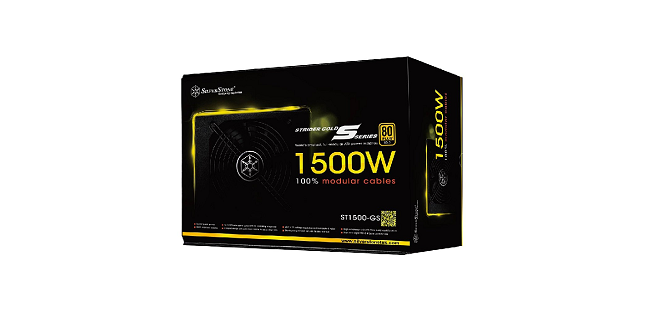Power Supply Standards & Size VS Performance
80 Plus Standard
Let’s deviate a little and cover the 80 Plus standard.
80 Plus is a voluntary certification program intended to promote efficient energy use in computer power supply units (PSUs). Launched in 2004 by Ecos Consulting, it certifies products that have more than 80% energy efficiency at 20%, 50% and 100% of rated load, and a power factor of 0.9 or greater at 100% load. Such PSUs waste 20% or less electric energy as heat at the specified load levels, reducing electricity use and bills compared to less efficient PSUs. Here’s a graphic to show the standards at which power supplies are held to make the different grades of 80 Plus Certification.
| 80 Plus test type | 115V internal non-redundant | 230V internal redundant | ||||||
|---|---|---|---|---|---|---|---|---|
| Percentage of rated load | 10% | 20% | 50% | 100% | 10% | 20% | 50% | 100% |
| 80 Plus | 80% | 80% | 80% | |||||
| 80 Plus Bronze | 82% | 85% | 82% | 81% | 85% | 81% | ||
| 80 Plus Silver | 85% | 88% | 85% | 85% | 89% | 85% | ||
| 80 Plus Gold | 87% | 90% | 87% | 88% | 92% | 88% | ||
| 80 Plus Platinum | 90% | 92% | 89% | 90% | 94% | 91% | ||
| 80 Plus Titanium | 90% | 92% | 94% | 90% | 90% | 94% | 96% | 91% |
The standard this SilverStone Strider 1500W PSU adheres to is 87% efficiency at 20%, 90% efficiency at 50% and 87% again at 100% load. As indicated on the chart, 80 Plus is just a straight 80% across the board, then moving farther down the table as the 80 Plus rating increases through the ranks tolerances for energy efficiency get tighter until it hits Titanium. Titanium is the highest standard and those are few and far between, as the cost to produce increases with tighter tolerances.
For instance, we’ve seen 1500W PSUs with a Titanium rating go as high as $470 and we can’t be sure that there aren’t more expensive models out there. What that equates to in real life dollars is about $100 – $120 dollars more than a Gold Rated PSU and most people balk at a 1500W PSU that runs $300, let alone a PSU that encroaches on half a grand.
Size VS Performance
There’s a new PSU sheriff in town and he’s cracking down on insanely large PSUs. The name tag under the sheriffs badge is SilverStone. SilverStone has been downsizing all their power supplies across the board. We spoke with highly placed SilverStone officials and it’s official that SilverStone is in the process of reducing the size of all their power supplies. As PSU technology moves forward, SilverStone actively redesigns their PSUs and as those redesigns happen the PSUs shrink in size.
Smaller PSUs are technologically harder to design, and they still have to meet 80 Plus certifications or few people are going to be interested in the product. SilverStone is rising to the challenge and meeting 80 Plus standards on all tiers while still shrinking the size of their PSUs.
Some enthusiasts are measuring PSUs by the wattage of the PSU in relation to the volume of the PSU itself, resulting in a number that represents wattage per liter. Lets look at the fairly simple math that goes into the wattage per liter measurement. Since we are looking at the SilverStone STT-ST1500-GS today, let’s use that as a basis for our math. (Courtesy of SilverStone, because beyond spitball math we have to take our shoes off to count, and the accuracy is assured from PSU professionals).
ST1500-GS wattage = 1500 Watt
ST1500-GS size = 150mm (W) x 86mm (H) x 180mm (D) = 2.32 liters
1500 Watt ÷ 2.32 liters = 646.55 Watt/liters
For the “Metric impaired”, here’s how a liter is defined and it doesn’t have anything to do with a frosty beverage in a screw-cap bottle.
A liter is defined as a special name for a cubic decimeter, or 10 centimeters × 10 centimeters × 10 centimeters. (1 L ≡ 1 dm3 ≡ 1000 cm3)
So by the given math, the wattage of a PSU divided by the volume of liters the PSU chassis occupies gives us a tangible measurement of w attage per liter. We’ve heard the measurement being called Power Density. The whole issue for us as reviewers is the technological achievement has been shoved aside with little more than a shrug of the shoulders and a passing “We don’t want to deal with Power Density because it will take reviewers more time.” We are sorry they have taken that attitude and denied readers the opportunity to marvel at smaller technologically advanced power supplies.
Look for a closer look at power density in a review in the near future, but remember: “All others follow in Bjorn3D’s footsteps as we blaze the path to understanding”.
Our thanks to Tony at SilverStone for helping us understand power density and the technologically advanced achievement of smaller, yet tight tolerance PSU manufacturing.
 Bjorn3D.com Bjorn3d.com – Satisfying Your Daily Tech Cravings Since 1996
Bjorn3D.com Bjorn3d.com – Satisfying Your Daily Tech Cravings Since 1996








